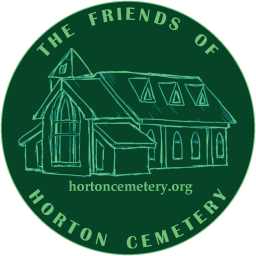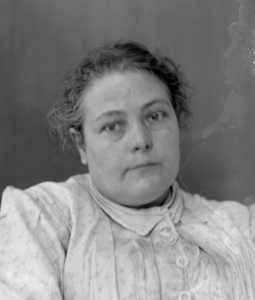b.1860-d.1914

Introduction
This gentleman caused some confusion. In his Colony records he is always referred to as Robert Hartley but I could find nothing in any online records for a man of that name and kept being taken to records for Richard Johnson Hartley.
Eventually I discovered his transfer papers from Peckham House Asylum to the Horton Asylum where he is referred to as Richard, giving the correct address and wife’s name. At some point in his transfer to Horton his name was recorded as Robert and remained so until his death. I imagine that when taking details from his wife he was referred to as “your husband” otherwise she would have corrected the mistake.

For the purpose of this story I will call him by his given name of Richard Johnson Hartley.
Early life
Richard was born in the March Q of 1860 in Southwark, Surrey. His parents were John Hartley and Ann Halstead who had married in the DQ of 1850 in the Haslingden registration district, Lancashire. He had one sibling, a brother named James Henry born in MQ 1851 in Waterfoot, (Haslingden district) Lancashire.
We know from descendants that Richard’s maternal grandfather Henry Halstead was a wheelwright in Rawtenstall, Lancashire and that his mother Ann was baptised at the Methodist chapel.
Soon after James’s birth we find the family in the 51c living in Coupe, Lench, Newhall Hey, and Hall Carr, a township in the Bury parish of Lancashire.

His father John was said to be born in 1825 in Crawshawbooth, and was a block cutter. His mother Anne was born in 1831 in Rawtenstall and a son James, just one month old, was born in Waterfoot , Lancashire.
A block cutter, or wood carver as he later calls himself, would have produced the printing blocks for the decoration of the fabrics which were one of the main industries in Lancashire at this time.
The family moves south
By the time of Richard’s arrival in 1860 the family had moved south and were living at 5, East Place, Southwark, Surrey. This may well have been due to the collapse of the cotton industry in Lancashire. With the onset of the American civil war 1861 – 64, cotton supplies from America were cut off and production had completely shut down by October 1861. Mills closed and mass unemployment and poverty followed.
https://www.historic-uk.com/HistoryUK/HistoryofEngland/Lancashire-Cotton-Famine
I871 finds Richard and his family living at 3, Llewellyn Grove, Bermondsey. According to Booth maps this was a poor area right down by the river near Glendenning Wharf. Richard is at school and his brother James is a labourer.
Was Richard married to Mary Ann?
During the following ten years Richard seems to have married. The 1881 Census shows him living at 2, Hatfield Street, Southwark with his “wife” Mary Ann. They appear to be fairly recently married as they have no children. He is 22 years old, born in Lambeth, Surrey and she is 23 years old, born in Hoxton, Middlesex. He is a Lighterman.
However, I can find no marriage for them in the south of England and as neither was born in the north I can see no reason for them to be married there.
If Mary Ann was Richard’s wife she must have died between 1881 and 1886 when he married Lydia Huff (as a bachelor) and I have found no deaths for a Mary Hartley of the right age in this time period
I wonder if Richard and Mary Ann were ever really married but just living together, and perhaps she simply left him. Possibly she died and was buried under another name or perhaps they were married and she left him, then he declared himself a bachelor when he married Lydia Huff, making him a bigamist?
Marriage to Lydia
We can be sure that on 14th March 1886 he married Lydia Huff at St Paul’s church, Southwark. You can see Richard’s father is shown as a Block Carver and Lydia’s as a Barge Builder.

We know from descendants that Richard’s wife Lydia Huff came from a family where several generations had built barges on the Thames, and that her brother Charles Huff was a lighterman.
A growing family – and a tragic death
In the 1891 Census we find the family living in Greenwich with their two daughters, Lydia Johnson, born 1888, and Bertha Florence, born 1889. From the information that Richard’s wife gave when he was admitted to the Colony we find that they had lost a son who died of convulsions. His name was Richard Benjamin John; he was born in the JQ of 1893 and died just one year later in late Dec 1894. He was buried in Newham cemetery on 20th Dec 1894.
By the time of the 1901 Census Richard, Lydia and their daughter Lydia have moved to 1a Commercial Road, Lambeth a building they share with two other families, a total of fourteen people. Bertha it seems is staying with her grandfather Benjamin Huff and his family at the Old Barge House Rotherhithe, which may indicate that things were not well at home.

Richard is now forty and still working as a Lighterman. This is a skilled job with an apprenticeship of 5 years. Descendants of Richard are in possession of his apprenticeship papers and we know that later he was a master lighterman with his own apprentice.
Lightermen transferred the goods from large ships that were too big to come into the docks.


Richard’s mental health problems
We know from Lydia’s information given to the Colony, that Richards mental health problems started when he was about forty-two but that he had “always been a hard drinker of ale and spirits” and that he had sustained several head injuries over the previous twenty years”. She also says that he was very violent and would “break up the home.”
It would appear that, following a “heavy bout,” he was in a state of coma for a week and was taken to Champion Hill Infirmary. This was the St Saviour’s Union Infirmary but was not in Southwark, it was actually at Champion Hill, Dulwich and is now Dulwich Hospital. He came home for a short while, and was then sent to Brook Street Infirmary which was the Lambeth Workhouse Infirmary, Brook Street, before being admitted to the Peckham House Asylum. Peckham House was opened in 1826 and took both private and pauper patients. Richard spent just nine months there from 29th June.1901. Peckham House was reputedly a good clean institution that took people from “all classes” and charged little more for private patients than paupers. Two of its famous patients were the comedian Dan Leno and Charlie Chaplin’s mother.
The intake of paupers decreased as county asylums were built and by the time Richard was there it took mainly “imbecile patients” from Westminster. https://ezitis.myzen.co.uk/peckhamhouse.
From Horton Asylum to the Ewell Epileptic Colony
He was transferred from Peckham House to Horton Asylum, Epsom on 25th March 1902 and lived there until 10 Dec 1912 when he was moved to The Ewell Epileptic Colony, Epsom. Unfortunately no records remain of his time in Horton.
Lydia’s mother had already died by the time of her marriage and the 1881 Census shows her living with her father in the ‘Old Barge House’ Upper Ground Street, Southwark.
On being admitted to the Colony his medical certificate is signed by Marcus Henry Quarry who states that, “He has lost his memory and wanders aimlessly about the place. He wants the patients “ordered off the premises” for playing tricks on him (delusion.) He states that “he was at work on a tug yesterday at Woolwich” (delusion.) This mirrors the information given by his wife Lydia who said that “He has entirely lost his memory and imagines he is always at his work”. He also accused a patient of “putting his boots in a pail of water.”
Richard’s case notes
Richard’s first case notes of 16.2.1912 state “He is demented, plausible and memory impaired. He says he has been here 6mths, and his stay in Horton varies at different times. He has vascular degeneration and his appearance suggest chronic alcoholism. He is in moderate health and well nourished.”
In June it is noted that “He is a good worker and good tempered but forgets what he is told to do.”
His fits are increasing over this period but he is still “working usefully in the farm party”
By December he is falling regularly in his fits which are increasing, and he often injures himself in minor ways and becomes confused following the fits.
This pattern continues into 1913 when we are told that he “doesn’t know the name of the King” – unsurprising in my opinion, when you have been largely locked away from the world for the past 12 years.
Throughout the year his fits, falls, injuries and memory loss continue but he is said to be a “contented individual and willing worker, but of no use whatever.”
Richard’s health deteriorates
January 1914 sees the start of a sudden deterioration, he complains of pain in his right hip and has a temperature and is transferred to hospital.
He is later re-admitted to the hospital and on February 17 the Colony doctor was called in and found the patient “on the point of expiring. He had had a fit and a second soon afterwards from which he never regained consciousness.”


Following his death Richard was buried in the Horton Estate Cemetery on 23rd Feb 1914 in grave 991 a under the name Robert Hartley.

Richard’s wife and children after his death
Richard’s wife Lydia did not survive him for very long, dying in the Dec Q of 1914 in Southwark.
Lydia Jnr married in 1907 to Charles William West and they continued to live in Southwark where Charles worked for the Borough Council as a scavenger/street cleaner. By the time of the 1911 Census they had their only child, a son Charles William Jnr who was born on 15 May 1911.
In the 1939 Registration they are still living together in Union Street, Southwark and young Charles is now a Draughtsman for the GPO.
Sadly, just one year later Lydia was killed in the Ewer Street Shelter, presumably by the bombing, and is buried in Camberwell New Cemetery.

Bertha Florence also married in the Dec Q 1907 on 26 October. No marriage certificate can be found for Lydia so we cannot be sure of the date.
Bertha’s husband was Redmond James Ring and according to the 1911 Census he was a colour grinder for a printing ink maker. At the time of the census they had two children, Mary 3 years and Bertha Florence 2 years. It also says that they had lost a child.
Redmond Snr died in 1921 and so, when we find them again in the 1939 Register Bertha is a widow. Her son Redmond J is still living with her as is her daughter Bertha Florence Ring, altered to Luke. Also John M Luke who appears to be John Michael Ring born 7 July 1915 in Southwark. And finally Kathleen Hartley born 1906. I cannot find out who this lady was.
Richard’s family.
Richard’s parents have proved to be difficult to trace. I decided to try and find out more about John (Richard’s father) by tracing his siblings but again, after 1851 it was like chasing ghosts, without knowing where they were living.
I also believe that they were nominally non-conformists and this is possibly why there is such a problem tracing them.
The only facts I can be relatively sure of are that his father John was born in Crawshawbooth, Lancashire and that John’s father was James Hartley born 1791. James was a Tailor.
By the time of the 1841 Census James’s wife (John’s mother) of unknown name, had died and left him with eight children including John still at home, with the older unmarried daughter Elizabeth now shown as the housekeeper.
In the 1851 Census James has died and John has left home and the two youngest children are now said to belong to Elizabeth herself.
Elizabeth Head 36 U Housekeeper bn Crawshawbooth, Lancs.
James Bro 24 U Calico weaver “
William Bro 22 U “ “ “
Henry Bro 19 U Pattern drawer “
Alfred Son 14 U Print house/Dye house “
Emelina Dau 10 U “
Emmaleena (Baptism)
It would seem that the entire family are working in the cotton industry which makes you wonder if they dispersed following the crash of 1861 as previously mentioned.
Having moved south in the late 1850s John and Ann continued living in Southwark and in the 1881 Census we find them at 4, Borough Rd, Southwark. John is still working as a block cutter. However it looks as though within the next few years they may have moved up to Leeds, possibly living near son James.
On 21.2.1887 we find the burial of a John Hartley of 1, Enfield View, in the Beckett Street Non-Conformist Cemetery, Leeds. His occupation is shown as “Joiner.”
It would seems that Ann then moved in with her son James as, in 1889 we find her burial in the same cemetery but the address is 19, Enfield Road. This is the same address we find in the 1891 Census for her son James and his family.
Sadly James died in 1892 aged just 40 and his burial, in the same cemetery, gives his address as 19, Enfield Grove. I have found photographs of John’s house and James’s family home but cannot find Enfield Grove. Perhaps it was called Grove by mistake.


James Henry Hartley, Richard’s brother, was born early in 1851 in the historic mill town of Waterfoot, Lancashire. By 1861 the family had moved to Southwark, Surrey and in the 1871 Census we find James working as a labourer.
On 21st May 1874 James marries Emma Robjant at St Mary Magdalene Church; his occupation is given as carpet cutter.

In the following census of 1881 James and Emma are living at 36, West Street, Bermondsey and have three children, John 6 years old, Ann 4 years old and Alice 1 year old.
Over the next five years they go on to have another three children, Bertha K born 1883, Rosina born 1885 and James Richard born 1886
On 11th May 1886 Emma took her own life as you can see by the death certificate below, and on the 14th May she was buried in the Beckett Street, Non-Conformist Cemetery.

What a shock for James who is left with six children to care for. He quickly remarries to Ann Jane Skirk on the 6 Oct 1886, at St Clement’s Church, Sheepscar, Yorkshire. Ann is just 22 years old and James is 35 years old, a “carpet cutter”.

Another child, Emma Margaret, is baptised on 30 November 1887 followed by Edith born on 12 July 1890.
In the 1891 Census we find the family living at 19, Enfield Road, Leeds.
Sadly on 7th January 1892 James died aged just 40, (Haemoptysis means “the coughing up of blood) leaving Ann Jane with six children to support.

James was buried in the Beckett Street cemetery on 9th Jan 1892 in what appears to be a common grave with six other people. Unusually there is a large carved headstone giving names and date of death for all buried below.
He left £279 4s 10d to his wife Ann Jane.
Ann Jane remarried and had three more daughters with her new husband Thomas Atkinson eventually dying in 1935 in Leeds. All of James’s children lived on in Yorkshire and married, except possibly Rosina who, in the 1911 Census was living with her brother John Robert.
It has been interesting to research a little into the lives of the Watermen of those days; there are some very good websites for more information.
It was a hard life and I’m sure Richard was not alone in becoming part of the drinking culture. It would have been very helpful to read his notes from Horton and see what other contributing factors were mentioned. Once again you have to wonder at the women who had to deal with the situations they found themselves in, except poor Emma who obviously found her life too much to bear.
I am grateful for the help of a co-researcher, Jenni, who helped me break down some of the brick walls in this story.
Contact from a family member
My cousin Lydia and I were fascinated by the account because Richard is our great grandfather! I am the granddaughter of Richard’s elder daughter Lydia. My cousin Lydia is the granddaughter of Richard’s younger daughter Bertha.
The account on the Horton Cemetery website confirms much of our research but also provided new information – for example, details of Richard’s case notes and the suicide of Emma Hartley. Thank you for this. Until recently neither Lydia nor I were able to find Richard’s death certificate as we didn’t realise that his name had been wrongly recorded as Robert.
Lydia and I can provide more information about Richard’s family if your researchers would be interested.
Some of this information has now been incorporated into the main story, but we hope to receive more in time.



